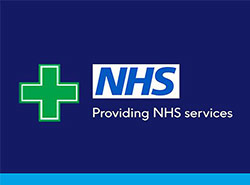From what it is to strategies for managing it, we’ve taken a closer look at emotional eating…
Food and feelings often go hand in hand. It’s normal to reach for the chocolate when we want to relax, a hearty meal when we’re sad or even a celebratory dessert when we’re happy. But, it can become an issue if these occasional treats turn into continuous habits.
Here, we explore how our emotions can be linked to our relationship with food, looking at what emotional eating is, what the common causes of it are and some strategies that might help to break the cycle of emotional eating.
What is emotional eating?
Emotional eating is when we eat to make ourselves feel better. If we’ve had a hard day, we might reward ourselves with a takeaway treat and if we’re feeling a little low, it might seem like that pack of biscuits is just the comfort we need.
The way we link food to our emotions is very normal, and we’ve probably been doing it all our lives. Think about it, crying babies are soothed with milk and young children are often rewarded for good behaviour with sweet treats or a fun dinner.
Using food as a comfort or reward is fine on occasion, but when it becomes our go-to coping mechanism for managing and regulating our emotions, that’s when it can become an issue.
One of the main problems is that we don’t tend to crave fruits or veggies when we’re feeling stressed or sad, it’s usually high-processed, high-sugar and high-fat foods. And there’s a biochemical reason for this. When we’re feeling stressed, the body releases the stress hormone cortisol, which in turn will trigger cravings for these high-energy foods – think chocolate, crisps, brownies (all the not-so-good stuff).
Is emotional eating the same as binge eating?
Emotional eating and binge eating might sound similar, but they’re actually quite different.
Emotional eating, like mentioned above, is when we turn to food as a way to cope with feelings like stress, sadness or even boredom. It’s about soothing emotions rather than satisfying physical hunger, and it can sometimes lead to overeating.
Binge eating disorder, on the other hand, is a recognised mental health condition. It involves eating unusually large amounts of food in a short space of time, often with a feeling of losing control. These episodes can be planned, might happen in secret and may leave someone feeling guilty or ashamed.
The key difference between the two is how frequent and how severe these behaviours are. Emotional eating is usually an occasional response to feelings, while binge eating disorder is a more regular pattern that involves eating large amounts of food and may require professional support to manage.
Emotional hunger vs. physical hunger
Emotional eating often stems from a hunger for comfort, especially when we’re experiencing big, overwhelming feelings, and it’s never satisfied with a full stomach. It usually comes on quickly and is often accompanied by a craving for a particular type of food.
Physical hunger is driven by your body’s genuine need for energy and nourishment. Physical hunger usually comes on more gradually and might come with signs like a rumbling stomach or feeling a bit tired or irritable.
Signs you might be emotionally eating
Emotional eating will look slightly different for everyone, but there are several signs to look out for:
- You become out of control around certain foods
- You have an urge to eat when you feel powerful emotions
- You want to eat even when you’re not physically hungry
- You find food soothes or calms you
- You reach for food as a reward or treat
How to identify emotional eating triggers?
As we’ve mentioned, emotional eating is triggered by exactly that – your emotions. Common triggers can include things like work stress, financial worries, health issues, relationship problems or feelings of loneliness.
It’s important to be able to pinpoint your own triggers. Try to be aware of your hunger, can you identify it as actual physical hunger or are you eating to find comfort? If it’s emotional, ask yourself what underlying emotions are you feeling and why might this be the case?
One handy tool for identifying triggers is the acronym HALT. It can encourage you to pause and check in with yourself:
- Hungry – are you physically hungry? If yes, it’s a sign your body needs fuel. If not, the urge to eat may be driven by something else
- Angry – are feelings of frustration or anger bubbling under the surface? Sometimes food can feel like an outlet or distraction from these emotions
- Lonely – are you seeking connection or comfort? Emotional eating can often fill the gap when you’re feeling isolated or unsupported
- Tired – are you physically or emotionally drained? Feeling tired can blur the lines between physical hunger and the need for rest or recharging
Once you become more aware of exactly what you are feeling, you can start to understand where these emotions are coming from. You can then make a plan to stop yourself from automatically reaching for food when these feelings arise.
Strategies to overcome emotional eating
If you’re worried about your food habits, we’ve put together some top tips that might help you break the cycle of emotional eating.
1. Adopt mindful eating practices
Mindful eating can be a great way to become more in tune with your appetite. It encourages you to be present in the moment as you’re preparing and eating food, avoiding distractions like TV or your phone. When it comes to mindful eating, eat slowly and engage all your senses, what does your food smell, taste and feel like? Allow yourself to really enjoy the process of eating as a multisensory experience.
Similarly, intuitive eating can also help you understand when you’re actually hungry. While there are crossovers with mindful eating, intuitive eating is a more focused approach and is all about tuning into your body’s signals when it comes to your hunger and fullness. Intuitive eating doesn’t take any foods off the table, but gently coaxes you towards good nutritional practices.
There are several pillars to the intuitive eating approach, but a big one is thinking before you eat. Ask yourself if you’re actually hungry before putting any food in your mouth and remember just because it’s your usual lunch or dinnertime doesn’t mean you must eat there and then. Tune in to what your body really needs, and you’ll learn to trust your own hunger signals and cues, which can help you understand when and why you might be emotionally eating. Find out more in our guide to intuitive eating.
2. Start a food diary
A mood/food diary can be helpful for understanding your own relationship between food and your feelings. Document what you eat through the day and any emotions you have before and after eating.
Pay particular attention to if you eat when you’re not actually hungry. Try not to judge yourself for any emotions you might be having and be honest so you can really start to understand your habits.
3. Work on healthy coping mechanisms
Once you’ve realised that you might be eating to soothe or cope with certain emotions, you need to find new ways to deal with these underlying feelings. This will be different for everyone, but some ideas could include:
- Having a relaxing hot bath
- Drinking a soothing cup of herbal tea
- Going on a short walk
- Phoning a friend to chat
- Taking up a mindful hobby, such as crochet
It’s all about self-care here, so think about what activities might help you to relax and destress and try a few out to see what works for you.
4. Move your body
Exercise is good for all sorts of reasons, but it can also help manage any emotions you might be having. Moving your body can help to lower your stress hormones, while the endorphins you get after exercise can also give you a lift.
You don’t need to go all-out at the gym if it’s not really your thing. You could try a low intensity activity like walking or cycling, maybe a new sport like dancing or tennis, or even something more mindful like yoga or Pilates.
5. Make healthy swaps
As we’ve said, it’s okay to reach for the comfort foods every once in a while, as long as it doesn’t become a regular pattern. It’s always important to maintain a varied, balanced diet and making a few simple food swaps can help you avoid some of those not-so-healthy cravings.
For example, you could try swapping your bars of milk chocolate for two or three squares of dark chocolate or a slice of malt loaf, switch the crisps for a handful of unsalted nuts or nut butter with sliced apple, and keep lots of fruits and veggies on hand for when you do fancy a nibble.
You also don’t have to give up the ‘treat night’ dinners altogether either. Want burritos? Try a burrito salad instead. Want pizza? Try making your own with a wholemeal wrap, tomatoes and low-fat cheese.
The importance of building a healthy relationship with food
We need to make sure we’re nourishing our bodies with positive food choices. Developing a healthy relationship with food takes time and practice, but doing so is important for both your physical and mental wellbeing in the long-term.
A healthy relationship with food is all about knowing how and why you choose the foods that you eat. You understand what will make you feel great and what will provide your body with the right nutrients and energy, you know when you feel hungry and when you’re full, and you listen to and respect your body’s natural hunger cues.
No food needs to be off limits, but we should all enjoy the less nutritionally-dense foods in moderation and shouldn’t rely on high-sugar or high-fat foods to deal with our feelings.
When to consider seeking professional support
Emotional eating isn’t a disorder in itself, but it can be a sign of disordered eating. If you’re feeling concerned or uncomfortable with your eating habits, make sure to reach out for support.
Speak with your GP about any issues you might be facing with food or connect with a registered dietician who may be able to help you address both the physical and mental sides of emotional eating.
BEAT is also a registered charity with a focus on helping those with eating disorders. They have helplines, chatrooms and plenty of online resources that you can turn to for advice and support.







